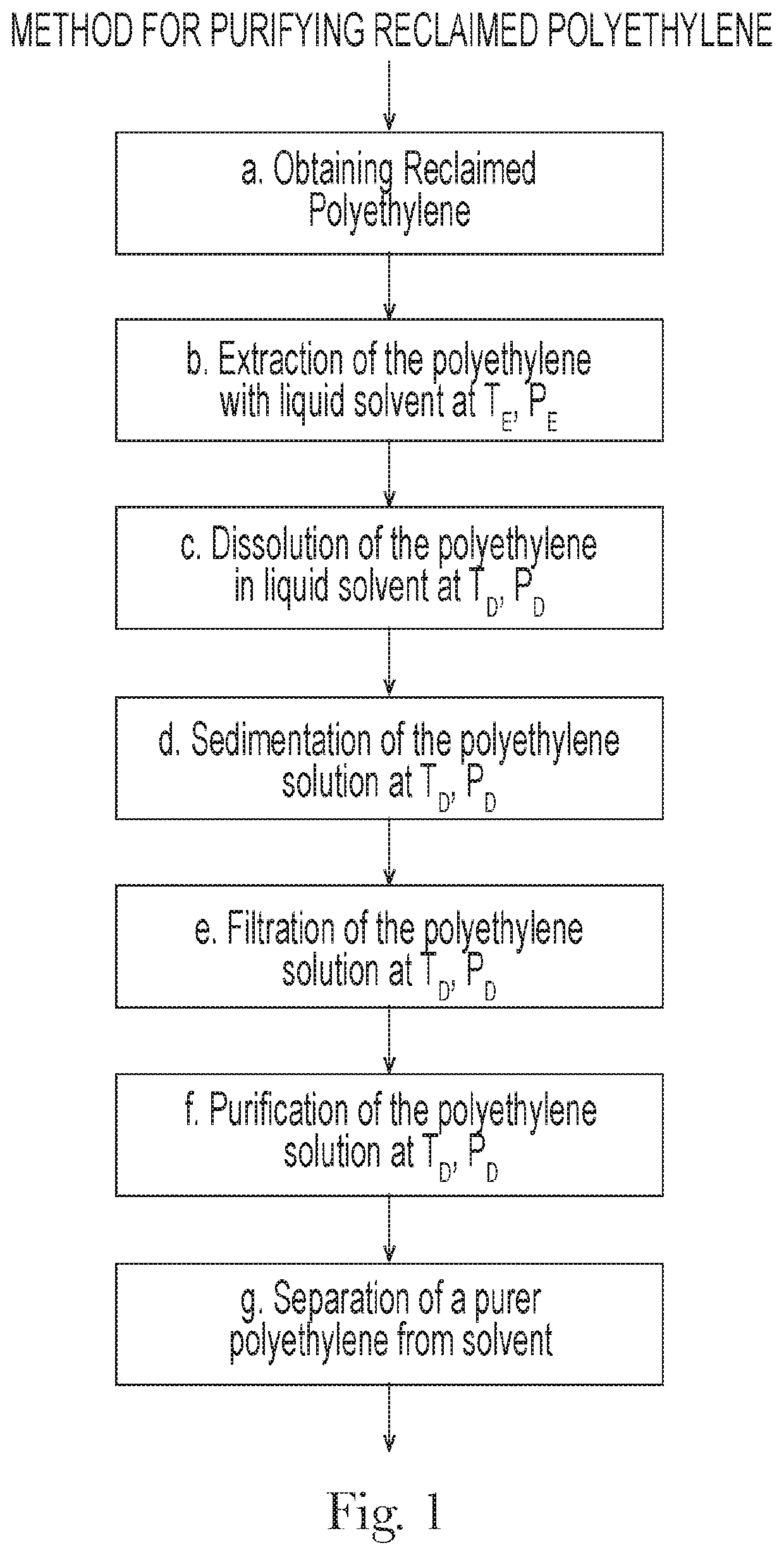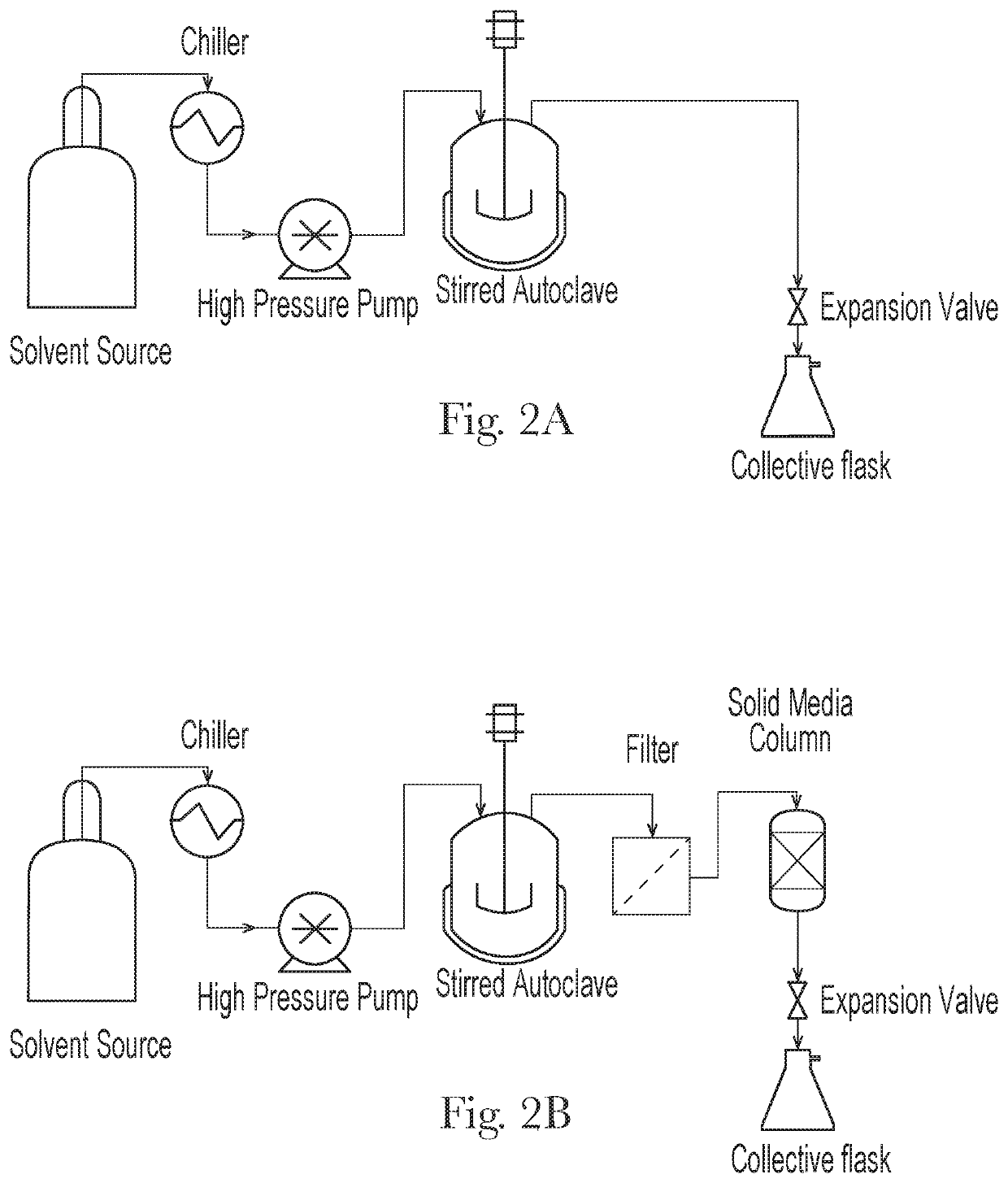Method for purifying reclaimed polyethylene
a polyethylene and reprocessing technology, applied in solvent extraction, sedimentation settling tanks, separation processes, etc., can solve the problems of unsightly and potentially harmful to ecosystems, millions of tons of plastic waste generated every year, and the final reprocessed pellet remains highly contaminated with unwanted waste impurities, such as spoiled food residues and residual perfume components
- Summary
- Abstract
- Description
- Claims
- Application Information
AI Technical Summary
Benefits of technology
Problems solved by technology
Method used
Image
Examples
Embodiment Construction
I. Definitions
[0034]As used herein, the term “reclaimed polymer” refers to a polymer used for a previous purpose and then recovered for further processing.
[0035]As used herein, the term “reclaimed polyethylene” refers to a polyethylene polymer used for a previous purpose and then recovered for further processing.
[0036]As used herein, the term “post-consumer” refers to a source of material that originates after the end consumer has used the material in a consumer good or product.
[0037]As used herein, the term “post-consumer recycle” (PCR) refers to a material that is produced after the end consumer has used the material and has disposed of the material in a waste stream.
[0038]As used herein, the term “post-industrial” refers to a source of a material that originates during the manufacture of a good or product.
[0039]As used herein, the term “fluid solvent” refers to a substance that may exist in the liquid state under specified conditions of temperature and pressure. In some embodimen...
PUM
| Property | Measurement | Unit |
|---|---|---|
| boiling point | aaaaa | aaaaa |
| pressure | aaaaa | aaaaa |
| temperature | aaaaa | aaaaa |
Abstract
Description
Claims
Application Information
 Login to View More
Login to View More - R&D
- Intellectual Property
- Life Sciences
- Materials
- Tech Scout
- Unparalleled Data Quality
- Higher Quality Content
- 60% Fewer Hallucinations
Browse by: Latest US Patents, China's latest patents, Technical Efficacy Thesaurus, Application Domain, Technology Topic, Popular Technical Reports.
© 2025 PatSnap. All rights reserved.Legal|Privacy policy|Modern Slavery Act Transparency Statement|Sitemap|About US| Contact US: help@patsnap.com


